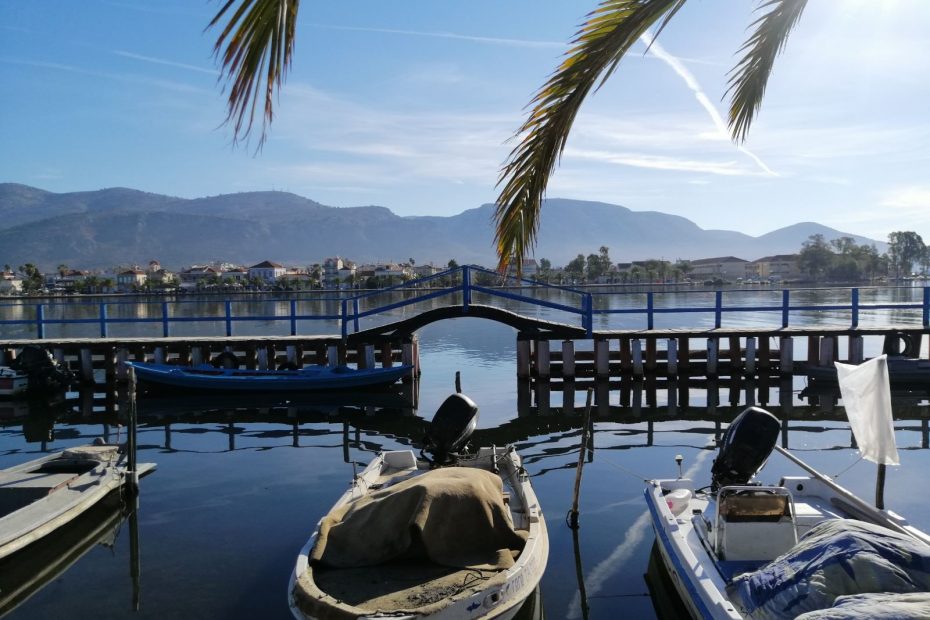Greece
Aitoliko Pilot Area
The Aitoliko Lagoon, situated in the Central West Greece is an ecosystem of high social and economic interest; it belongs to Ramsar Convention, and is a Natura 2000 protected area.
The water of Aitoliko Lagoon is eutrophic with diminished water clarity and anoxic conditions in the deeper part, especially below the depth of 7m. In the absence of oxygen, sulfide ions are emerged from the benthos of the lagoon and produce hydrogen sulfide gas which is very toxic. Therefore, Aitoliko Lagoon is facing the triple problem of Eutrophication, Anoxia and Hydrogen Sulfide gas. In the next figure you can see the Aitoliko Lagoon under a eutrophic crisis.

Aitoliko lagoon has a typical Mediterranean climate, with dry summer and wet winters. The mean annual temperature is 17.3oC (mean winter: 9o C; mean summer: 26.4oC), and the mean annual precipitation is 915 mm (Koutsodendris et al., 2017).
The Aitoliko lagoon has a unique morphology because it is a close lagoon with minimum water renewal but high depth (up to 28m). The morphology of the Aitoliko Lagoon, combined with the large quantities of effluents that receive and its limited communication with the neighbouring Lagoon of Messolonghi, results in a permanent stratification of the water column (Gianni and Zacharias, 2012). Below the water surface, the water is permanently anoxic, with hydrogen sulfide concentrations up to 176 μmol/L.
Aitoliko Lagoon suffers from Algae Bloom during the spring season. This phenomenon is commonly found in close seas or lakes with minimum water renewal, like the Black Sea. What is unique in this area is that it suffers from anoxic crises, with the emerge of H2S on the surface of the Lagoon as reported by Gianni et al. (Gianni et al., 2012). This situation leads to the total deterioration of the aquatic ecosystem of Aitoliko Lagoon, high mortality of fish community and fish farming damage.
The main problems of the Aitoliko Lagoon are the following:
- The effluents from the Wastewater Treatment Plan within the Lagoon of Aitoliko.
- Drainage Pumping Stations are probably the primary source of nutrient loading in the Aquatic System of Aitoliko lagoon.
- The limited water exchange between Aitoliko and Messolonghi Lagoons is a major oceanographic problem.




